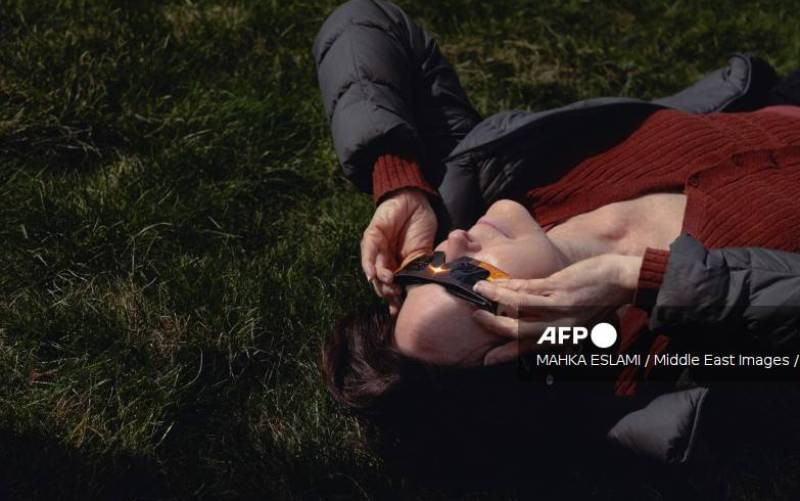BY JOSEPH KARIMI
On the afternoon of Saturday, June 30, 1973, in the days of the great race to the moon, 160 Kenyans took off the ground for a picnic to witness a rare occurrence – a total eclipse of the sun. I was one of them.
The flight aboard a “Special Sun Eclipse Flight QG066” would take us above the clouds, where we would have an uninterrupted view of the sun being “swallowed by the moon”.
About 3,000 people comprising leading astronomers and scientists were all set to observe a total eclipse of the sun due that afternoon. A section of the earth’s surface was to be in darkness for five minutes.
A large number of the scientists and enthusiasts camped at Loiyengalani, the lakeside town on the shores of Lake Turkana. They were linked to their observatory stations and had long range telescopes to facilitate a study of the sun during the five minutes of darkness.
A total eclipse of the sun happens when the moon moves between the sun and the earth. Its shadow falls on earth, causing darkness.
Scientists from America, Europe and Japan were joined by hundreds of tourists at Loiyengalani, where they had camped waiting for the great moment. It finally came at 3.30pm with the first ‘contact’ of the moon biting the sun and heralding the solar eclipse, which embraced the total surface of the sun at 4pm. Then the five minutes of darkness began.
The sky dimmed slowly, an orange glow seeming to get smaller and smaller. It was dark enough to prevent one from seeing distant objects. In the environs of Marsabit, motorists switched on their head lamps. It was like dusk.
Our special Flight QG066, a chartered East African Airways VC-10 passenger plane, lifted off at 3pm from Jomo Kenyatta International Airport, one hour ahead of the total eclipse. Those on board had paid Sh500 for the two hour-flight, which circled a 35-mile radius within the line of totality. We were flying at an altitude of 39,000 feet.
We were not alone up there. Above our VC-10 plane, some top scientists from America and Europe flying in an Anglo-French Concorde supersonic jet commanded the heavens, traversing the line of shadow of totality at a height of 10 miles above ground.
By flying Concorde, then the fastest aircraft in the world, the scientists were able to “chase the shadow” for up to eight minutes.
In Kenya, preparations had started two weeks before, with scientists setting up their equipment at strategic spots around the Loiyengalani Oasis Lodge on the shores of Lake Turkana, waiting for the moment with great delight.
Nairobians could only view a partial eclipse. This natural phenomenon elicited unprecedented domestic tourism, with hundreds of local people migrating north in their numbers up the 633km from Nairobi to Marsabit, to catch a glimpse of the eclipse.
The transit towns of Lodwar, Garissa and Laisamis were crowded with people anxious to see the eclipse in its entirety. Others paid for airlifts to Loiyengalani to witness this fabulous natural event.
Suicide note
Stay informed. Subscribe to our newsletter
Minutes before 4pm, a man from Murang’a District was reported in the Kenya Police crime reports to have locked himself in his house and hanged himself to avoid being caught up in what he thought was the end of the world.
He died a few minutes ahead of the “commotion” he anticipated would accompany the eclipse. He left a suicide note bidding his family goodbye. It was believed he gasped his last just as the total eclipse was realised.
The resident pastoralists living within the belt of the moon’s shadow were seen to shun the eclipse. Some retreated into their huts while others moved away from the belt covered by the totality.
The pilot of our flight, Captain Trevor Hill, told me later that he had made 10 laps within the eclipse area at a speed of 600 miles an hour.
Weeks ahead of the eclipse, there was widely publicised public awareness messages on the dangers of looking into the eclipse with the naked eye. People were advised to use darkened film to tame the sun’s direct rays.
However, many people, myself included, threw all caution to the wind when the eclipse occured. I was later listed for treatment, learning the hard way after a doctor told me I had “cotton in my eyes”.
Kenya benefited
This June 30th total eclipse was only observed along a 270-kilometre (170 miles) belt that cut through the northern parts of Kenya, with the shadow of the eclipse extending from Mauritania through Mali, Niger, Chad, Sudan, Kenya and Somalia, and ending in the Indian Ocean.
From Kenya’s Ngwana Bay Rocket Range located 20km north of Malindi, a two-stage American rocket was launched, rising to 400km over the earth to collect scientific data to help scientists in their space probe. Research details gained were fed back to scientists in Nairobi, Rome and the United States.
A leading scientist was quoted saying that the earth was observed to have been slowing down at a rate of about half a second every year, and that it had slowed down by 43 seconds between 1900 and the day of the eclipse.
As the earth darkened, cocks crowed and cattle grazing on the lake shore started drifting homeward. Then it was all over. Dr GW Curtis, the scientific leader of the American group, was quoted saying “everything was superb”.
At least 80 American scientists who participated spent over £210,000 to mount their equipment for their observatories. The eclipse viewing fetched about £100,000 in foreign exchange
Ministry of Natural Resources Deputy Secretary Mr N Karanga, who chaired a committee that organised facilities and security for the hundreds of scientists and ordinary visitors within the area of totality, said everyone was satisfied and history would record the success that scientists had gained viewing the eclipse from Kenyan soil.
 The Standard Group Plc is a
multi-media organization with investments in media platforms spanning newspaper
print operations, television, radio broadcasting, digital and online services. The
Standard Group is recognized as a leading multi-media house in Kenya with a key
influence in matters of national and international interest.
The Standard Group Plc is a
multi-media organization with investments in media platforms spanning newspaper
print operations, television, radio broadcasting, digital and online services. The
Standard Group is recognized as a leading multi-media house in Kenya with a key
influence in matters of national and international interest.
 The Standard Group Plc is a
multi-media organization with investments in media platforms spanning newspaper
print operations, television, radio broadcasting, digital and online services. The
Standard Group is recognized as a leading multi-media house in Kenya with a key
influence in matters of national and international interest.
The Standard Group Plc is a
multi-media organization with investments in media platforms spanning newspaper
print operations, television, radio broadcasting, digital and online services. The
Standard Group is recognized as a leading multi-media house in Kenya with a key
influence in matters of national and international interest.









